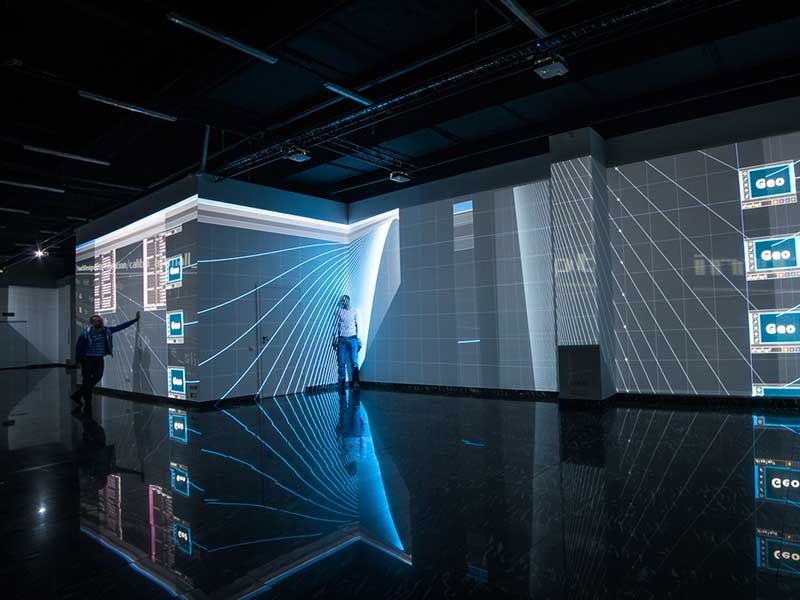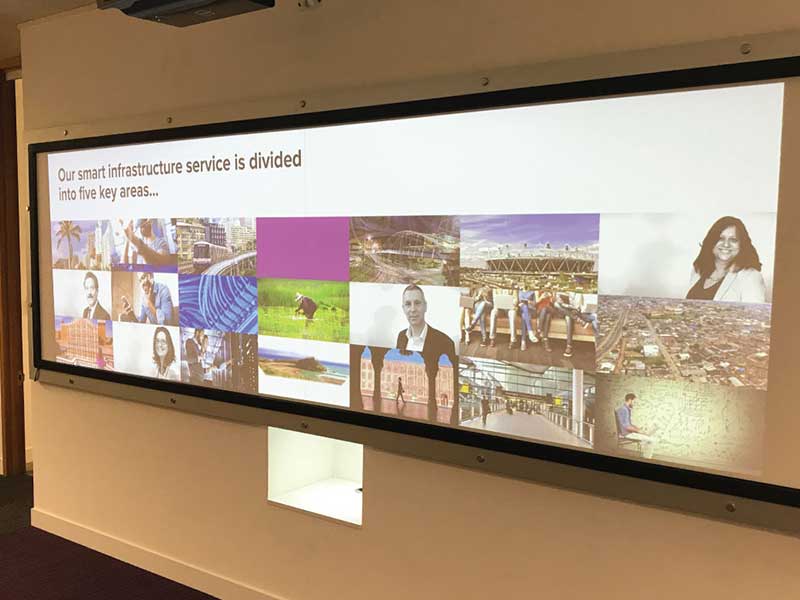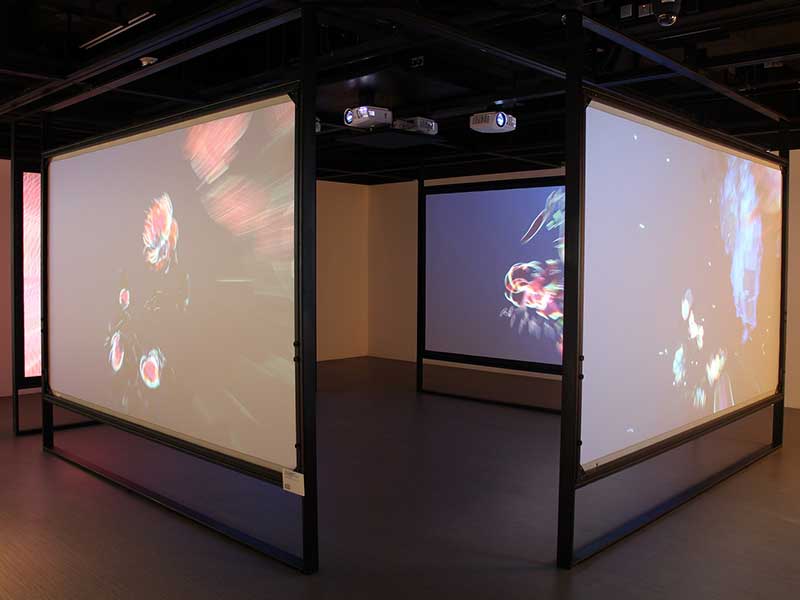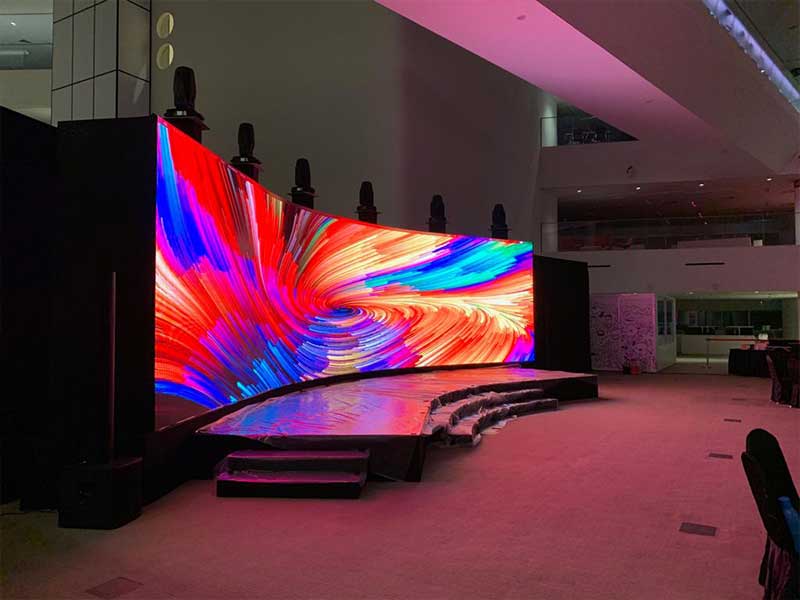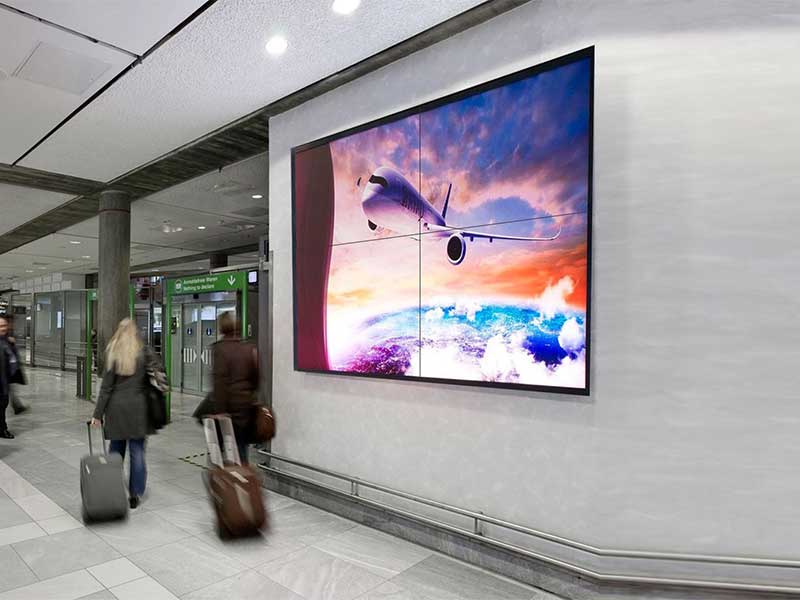Video Wall Solutions
There are several types of video wall technologies available in the market today, each offering unique characteristics and advantages. The main types of video wall technologies include:
LED (light-emitting diode) video walls use an array of tiny LED modules to create a seamless and high-resolution display. LED video walls offer high brightness, high refresh rate, excellent contrast ratios, and exceptional color reproduction.
LED video walls are known for their durability and energy efficiency.
LCD (Liquid Crystal Display) video walls consist of multiple LCD panels seamlessly tiled together to create a larger display. LCD video walls are known for their high-resolution capabilities, color accuracy, and wide viewing angles.
They are suitable for various indoor environments and can be customized in size and configuration.
Rear projection cubes are individual display units that utilize projection technology to display images on a screen. These cubes are stacked together to create a video wall. Rear projection cubes offer high brightness, excellent color reproduction, and long lifespan.
They are commonly used in control rooms and mission-critical environments.
A video wall that is setup by aligning multiple projectors in order to form a larger projection display. These projectors utilize the softedge blending technology to ensure a smooth transition between individual projected images.
This technique effectively eliminates any visible borders or gaps, resulting in a unified and uninterrupted visual display.
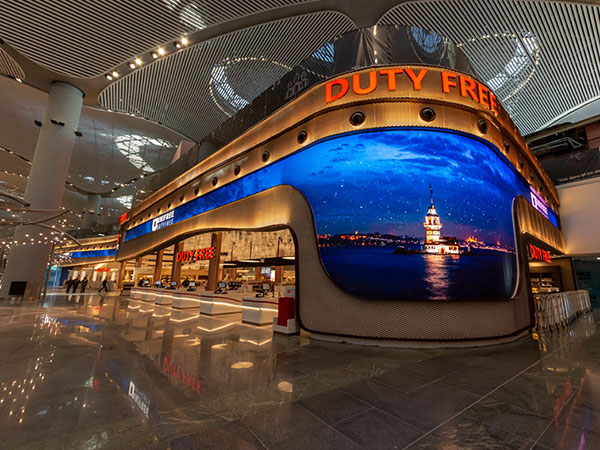
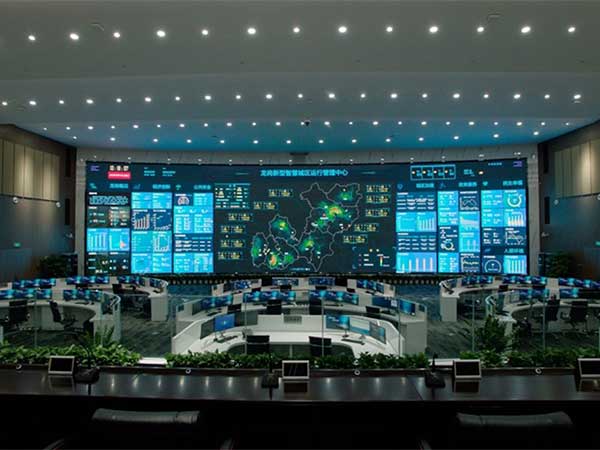
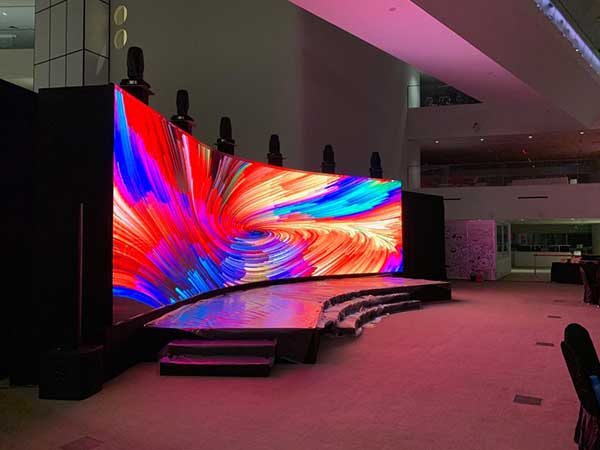
LED Video Walls
LED video walls are made up of numerous LED modules, each containing multiple LED pixels. These modules are then assembled together to create a larger screen. Each piece of LED serves as an individual pixel of the display. LED video walls are known for their high brightness, excellent color reproduction, and flexibility in creating large-scale visuals.
LED video walls provide flexibility in terms of size and aspect ratio, as they can be customized to fit specific requirements. They can be constructed in different pixel pitches, which determines the resolution and image clarity. Smaller pixel pitches result in higher resolution and sharpness, while larger pixel pitches are suitable for viewing from a greater distance.
LED video walls are commonly used in various applications, such as digital signage, stadiums, auditoriums, control rooms, retail displays, and event venues. They offer a versatile and impactful solution for delivering engaging visual content and creating immersive viewing experiences.
LED video walls offer several advantages:
Brightness and Contrast:
LED video walls produce high brightness levels, making them easily visible even in well-lit environments. They also provide excellent contrast ratios, enhancing the overall image quality and ensuring vibrant and dynamic visuals.
Flexibility in Size and Shape:
LED video walls can be customized to fit various sizes and aspect ratios. They are modular in nature, allowing for easy expansion or reduction of the display area.
Seamless Integration:
LED panels in a video wall are designed to seamlessly fit together, resulting in a smooth and continuous display with no visible borders or gaps.
Wide Viewing Angles:
LED video walls offer wide viewing angles, ensuring that the content remains visible and clear from various positions in the audience. This is particularly advantageous in large venues or areas with a dispersed audience.
Energy Efficiency:
LEDs are energy-efficient compared to other display technologies, consuming less power while still providing bright and high-quality visuals.
Durability and Reliability:
LED video walls are built to withstand continuous operation and are resistant to damage from vibrations, making them highly reliable for long-term use. Additionally, LED panels have a longer lifespan compared to other display technologies, reducing maintenance and replacement costs.
Content Flexibility:
LED video walls can display a wide range of content, including high-definition videos, images, animations, and dynamic graphics.
Overall, LED video walls provide superior image quality, flexibility, and durability, making them a popular choice for various applications where impactful and immersive visual displays are desired.
LCD Video Walls
An LCD video wall is a large display system composed of multiple LCD (liquid crystal display) panels seamlessly arranged together to create a single, unified visual display. These panels, known as video wall tiles (a standalone LCD display unit), can vary in size and are mounted edge-to-edge to eliminate bezels or gaps between them. The result is a large-scale, high-resolution display with a virtually seamless and immersive viewing experience.
LCD video walls are commonly used in various settings such as control rooms, command centers, retail spaces, corporate environments, event venues, and public displays. They offer a versatile platform for showcasing dynamic content, including videos, images, data visualizations, advertisements, and interactive presentations.
The individual LCD panels within a video wall are equipped with advanced technologies, including high-definition (HD) or ultra-high-definition (UHD) resolutions, LED backlighting for vibrant and uniform brightness, and narrow bezels for minimal visual interruption. Some video walls also support features like touch interactivity, advanced color calibration, and automated content management systems.
LCD video walls offer several advantages:
High Resolution:
LCD panels used in video walls often feature high-definition (HD) or ultra-high-definition (UHD) resolutions. This allows for crisp and detailed visuals, ensuring that the displayed content is vibrant and clear.
Color Accuracy:
LCD technology provides excellent color reproduction, ensuring that the visuals on the video wall accurately represent the intended colors and shades.
Wide Viewing Angles:
LCD video walls typically offer wide viewing angles, allowing viewers to see the content clearly from various positions and perspectives without significant color distortion or degradation.
Flexibility:
LCD video walls can be customized in terms of size and configuration to meet specific requirements. They can be constructed in various formats, including tiled arrays or creative shapes, to fit the available space and desired visual impact.
Energy Efficiency:
LCD technology has advanced significantly in terms of energy efficiency. Modern LCD panels used in video walls often incorporate energy-saving features, reducing power consumption without compromising display quality.
LCD video walls provide a visually stunning and dynamic platform for displaying content in a wide range of applications. They enable organizations to create impactful visual experiences, engage their audiences, and deliver information effectively.
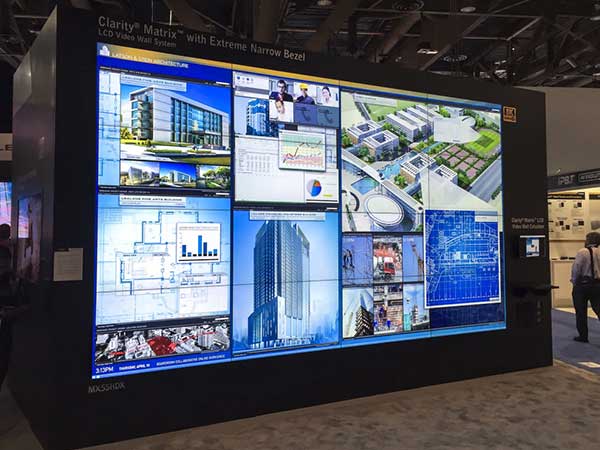
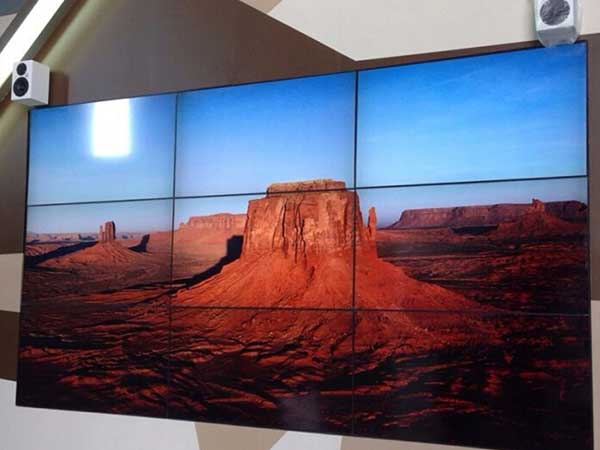
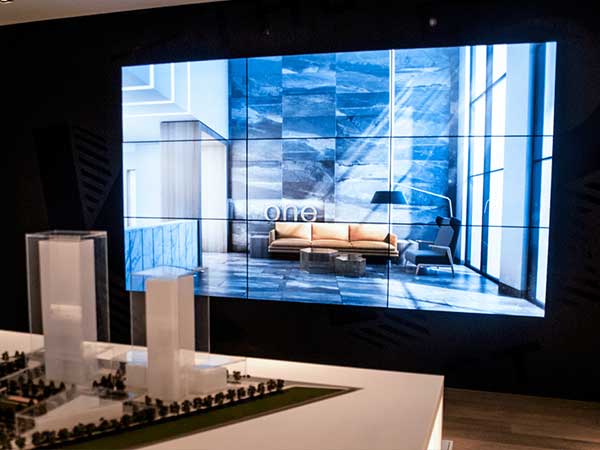
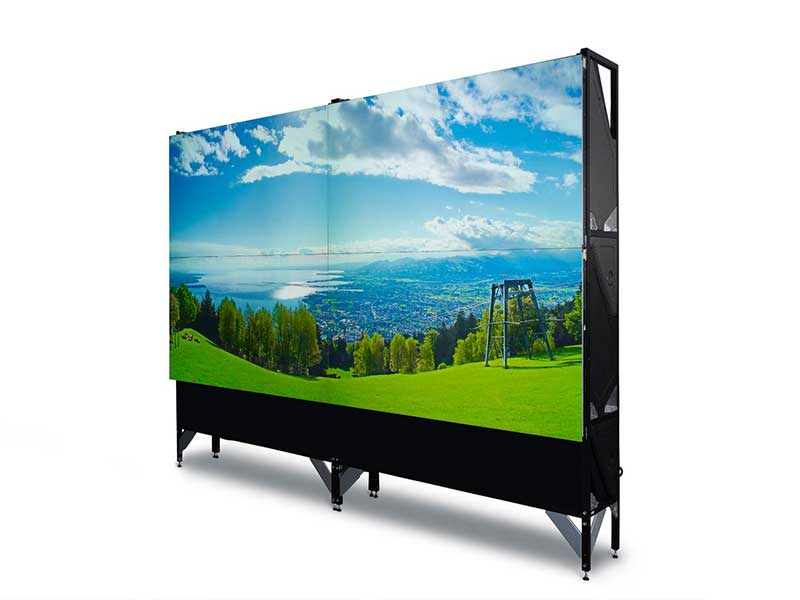
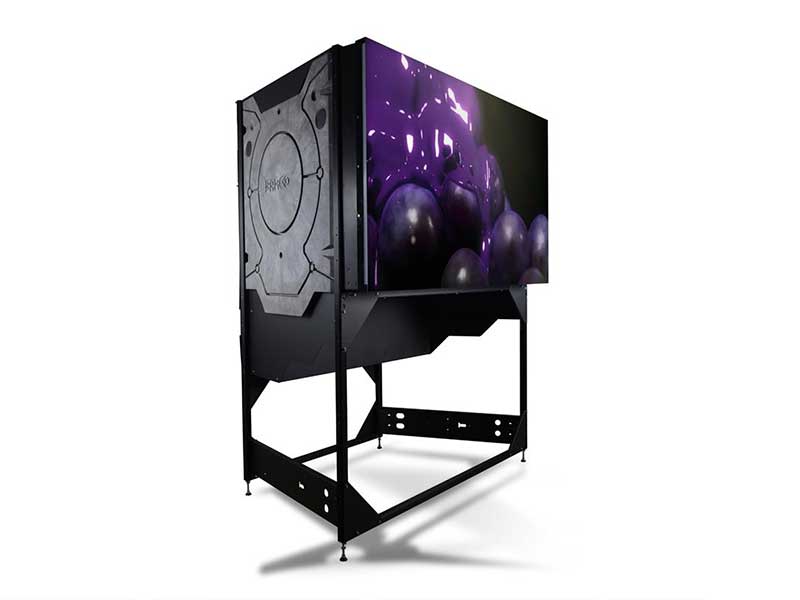
Rear Projection Cubes Video Walls
They offer several advantages:
Image Quality:
Rear Projection Cubes typically deliver excellent image quality with high brightness, contrast, and color accuracy. The rear projection screens used in these cubes are specifically designed to optimize the projection and reflection of light, resulting in clear and vibrant visuals.
Viewing Angles:
Rear Projection Cubes provide wide viewing angles, allowing multiple viewers to see the display clearly from different positions and perspectives. This is important in control room settings where operators need to view the content from various angles without any distortion or loss of image quality.
Durability:
Reliability:
Since the projectors are positioned behind the screens, they are protected from external factors such as dust, debris, and accidental impacts. This design reduces the risk of projector damage and ensures reliable operation.
Modularity:
Rear Projection Cubes video walls are modular, meaning that individual projection cubes can be easily replaced or added to the video wall without disturbing the overall display. This allows for flexibility in creating custom configurations or expanding the video wall as needed.
Overall, Rear Projection Cubes video walls offer reliable and high-quality visual performance, making them suitable for demanding applications where uninterrupted operation, image quality, and wide viewing angles are essential.
Front Projection Video Walls
A front projection video wall is an advanced display system that leverages the power of multiple projectors to create a stunning, large-scale visual experience. By employing the sophisticated technique of soft edge blending, these projectors are meticulously aligned to seamlessly merge their projected images, resulting in a unified and uninterrupted display.
Through the precise calibration and synchronization of multiple projectors, a front projection video wall delivers a mesmerizing visual canvas that captivates viewers. The soft edge blending technique ensures that there are no discernible borders or gaps between the projected images, creating a seamless and immersive visual feast.
This cutting-edge technology enables the creation of expansive displays with exceptional clarity, color accuracy, and brightness. Whether used in corporate presentations, immersive installations, or large-scale events, a front projection video wall provides an awe-inspiring platform that enhances storytelling, engages audiences, and leaves a lasting impression.
Front projection video walls offer several advantages:
Scalability
Cost-Effectiveness:
Front projection technology can be more cost-effective compared to other video wall technologies, such as LED or LCD video walls. Projectors used in front projection setups tend to be more affordable, allowing for cost savings when creating large-scale displays.
Flexibility:
Front projection video walls offer flexibility in terms of screen size and positioning. They can be set up on various surfaces such as flat or curve allowing for creative design possibilities.
Wide Viewing Angles:
Front projection video walls typically provide wide viewing angles, allowing viewers to see the content clearly from various positions and perspectives.
Seamless Blending:
Soft edge blending ensures a smooth transition between projected images, creating a unified and immersive visual experience.
Easy Maintenance:
Individual projectors can be serviced or replaced without affecting the entire video wall, reducing downtime and maintenance costs.
Front projection video walls are commonly used in applications such as theaters, immersive installations, trade shows, and live events, where a large and captivating display is desired.
